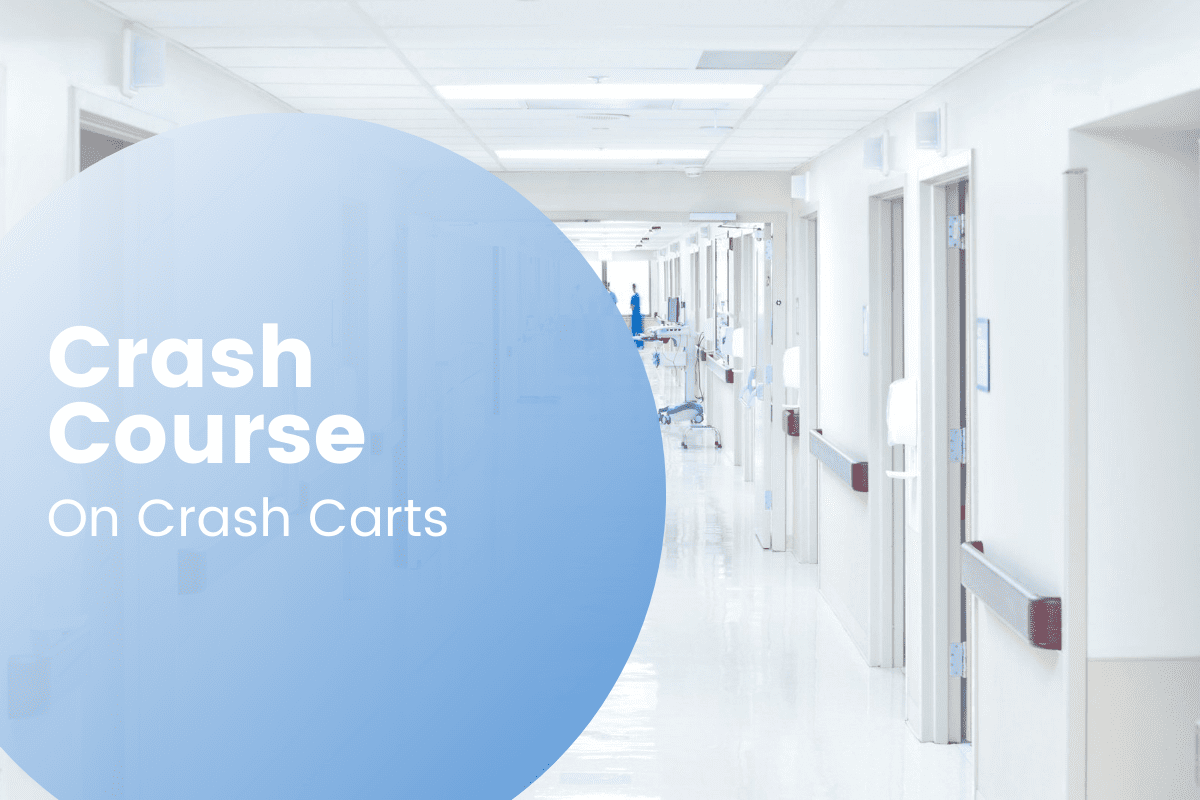
What is a Crash Cart?
Crash cart is a general term that applies to a mobile cart containing everything needed to administer care immediately in the case of an emergency. Although they may slightly differ in looks and specific contents, every facility that may have to deal with a sudden health emergency should have a crash cart on hand.
What goes in a Crash Cart?
Crash carts are designed so that everything that may be needed to deal with an emergency is readily available. Most crash carts have at least five drawers, with the smallest drawer size at the top and the largest drawer on the bottom. This common design makes it simple for healthcare workers to recognize the cart, and know where the medication or supplies that they need will be.
Externally
On top of most crash carts, you will find a biphasic defibrillator with adult paddles and adult multi-purpose pads, along with pads and paddles for infants visible next to it. Along with the defibrillator, the NIH suggests placing Ambu-bags, with facemasks and oxygen tube connectors in both adult and child sizes on one side. On the other side, they recommend placing a compressed oxygen tank along with a CPR backboard on the back of the cart.
Internally
The top couple of drawers in a crash cart should contain essential resuscitation medications that are all clearly marked and sorted. These drawers will usually be compartmentalized in order to allow medications to be stored separately and be visible at first glance.
The third drawer is usually designated to contain all the supplies needed to establish peripheral intravenous access rapidly. This includes things like angiocatheters, needles, alcohol wipes, syringes and much more.
The fourth drawer of many crash carts is designed to store respiratory equipment and supplies.
The fifth drawer is mainly designated for holding larger supplies and instruments that are needed for special emergency procedures such as central venous catheters, intraosseous kits, chest tubes, thoracostomy kits, suture sets, trauma tourniquets and more.
How to use a Crash Cart efficiently?
The biggest factor when it comes to using crash carts effectively is organization. Healthcare personnel should not have to struggle to find the supplies they need in the case of an emergency, and the best way to ensure this is a well-organized and stocked crash cart. One great way to keep everything in order is a laminated list of the contents of each drawer that is placed on the outside of each drawer in clear sight. Another technique to keep medications clear and in the right spot in the top drawers is to separate any medications with similar names so they are not next to each other in the drawers and eliminate any unnecessary confusion.
Breakaway plastic locks on crash carts are another great safety feature that many carts have integrated to reduce any confusion about which supplies had been used. It is also very important to have qualified personnel regularly inspect the contents of crash carts and restock as needed after every use.
Why are Crash Carts the perfect solution?
When used effectively, crash carts are the perfect solution for medical emergencies. They are stocked with all of the supplies, equipment, and medications that may be needed to provide immediate care, and are labeled in a way that removes any confusion. Crash carts allow healthcare workers to not have to worry about having the right supplies, and to focus all of their energy on the patient that is in need of immediate attention. Crash carts are a staple in all healthcare facilities that may have to deal with emergency health situations, and they will remain so for the foreseeable future.
